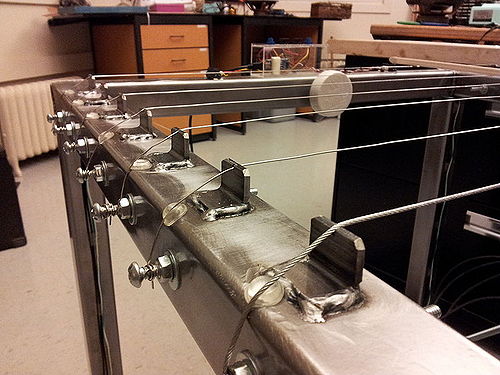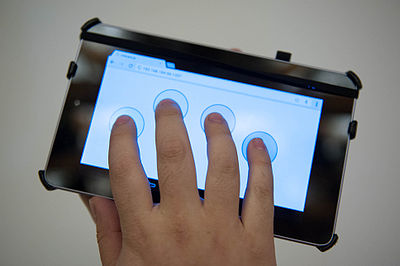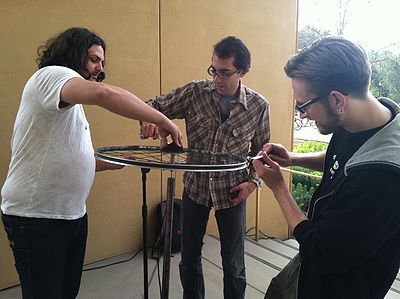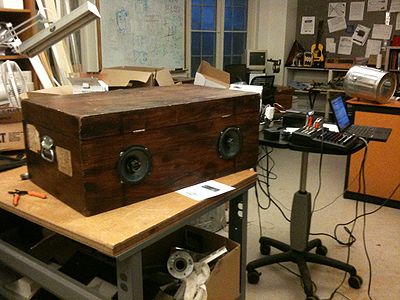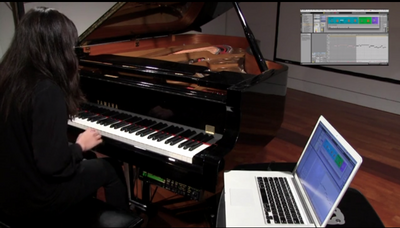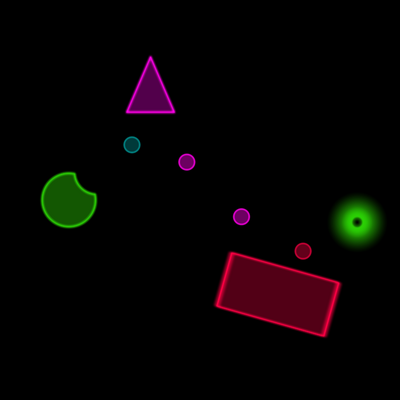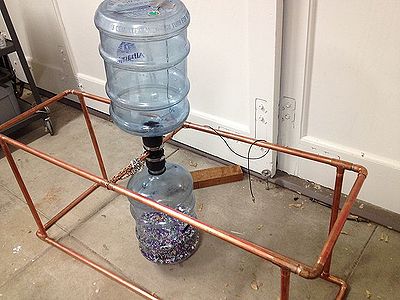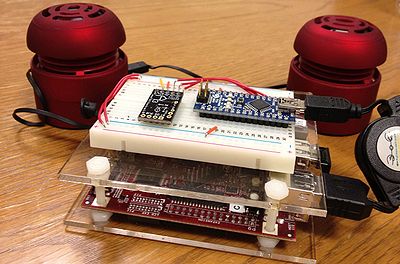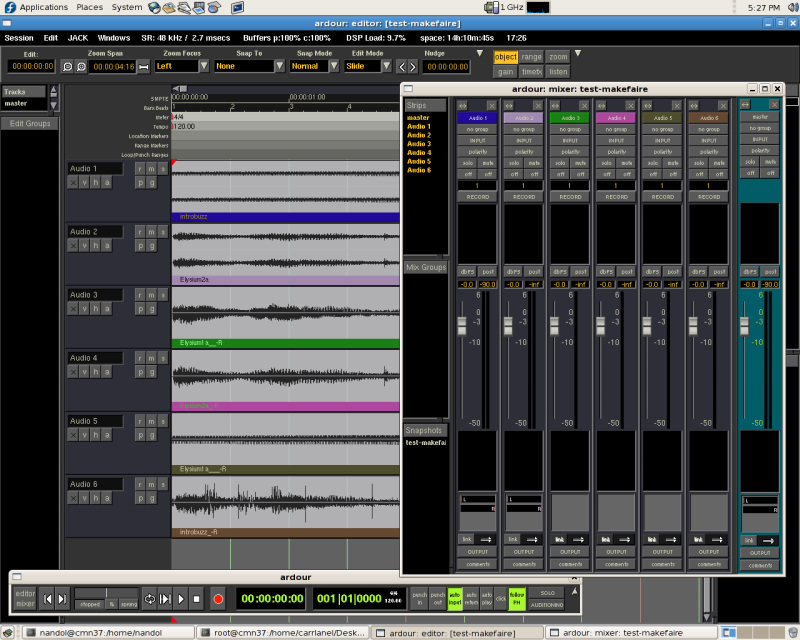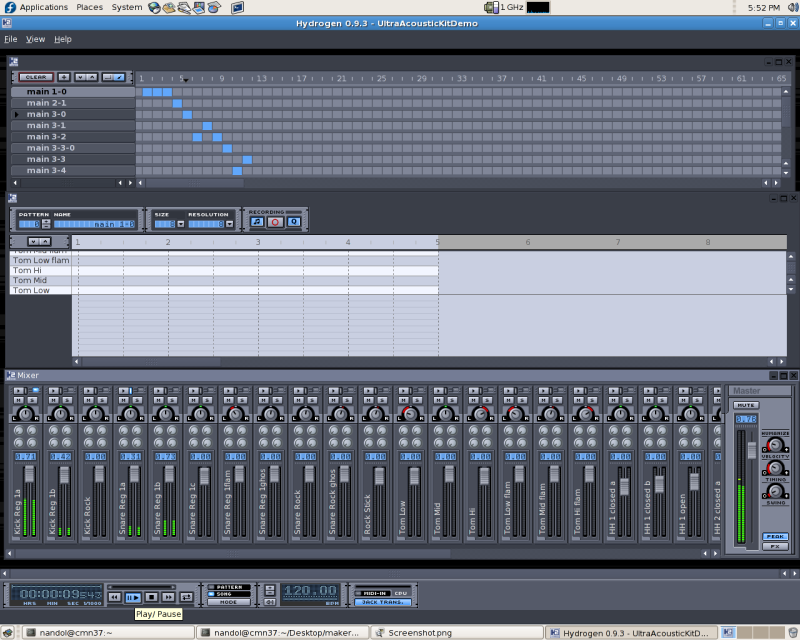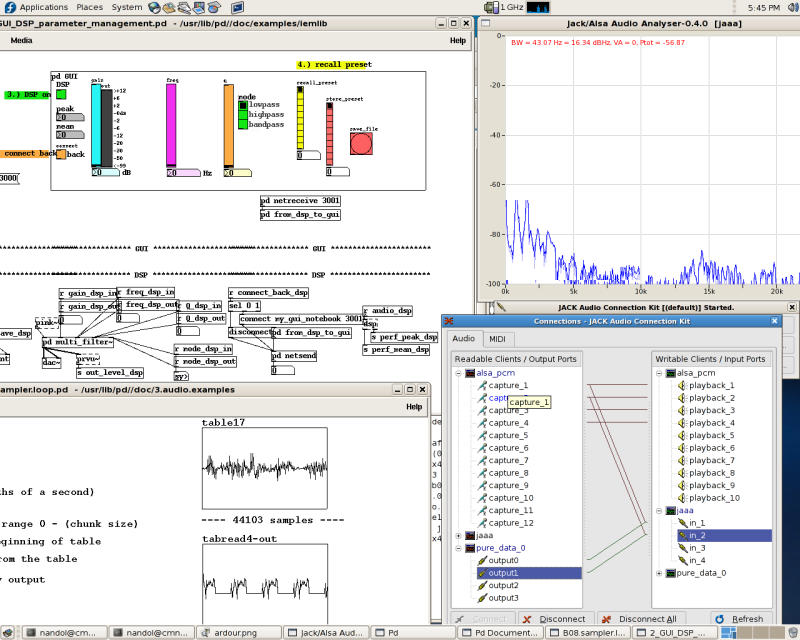Difference between revisions of "MakerFaire"
| Line 59: | Line 59: | ||
[[Image:tulpasynth_scene_02.png|400px]] | [[Image:tulpasynth_scene_02.png|400px]] | ||
| + | ==Hourglass== | ||
| + | Jennifer Hsu | ||
| + | |||
| + | We rush through our days passing judgements on everyday objects, forgetting | ||
| + | that this judgement is a reflection of our own ideas of social hierarchy. In | ||
| + | a hurry, we impose an aspect of class on the things that we see and the things | ||
| + | that we hear. We can take the time to defamiliarize ourselves from these | ||
| + | objects and opinions and immerse ourselves in the experience of waiting for | ||
| + | time to pass, watching and listening to the passing of time. | ||
| + | |||
| + | A turn of the hourglass causes the assortment of junk jewelry (Mardi Gras | ||
| + | beads, faux pearls, wooden bulbs, vintage buttons, and rhinestones) to fall | ||
| + | from one water bottle to the other. This creates a dynamic resonance in the | ||
| + | upper water bottle as a result of the changing space within the closed system. | ||
| + | A piezoelectric sensor captures the sonic quality of the moving resonance | ||
| + | which is then amplified and sent through a speaker. | ||
| + | |||
| + | [[Image:667px-Jhsu_250b_hourglass_assembled.jpg|400px]] | ||
Revision as of 21:22, 21 March 2013
Contents
Introduction
The Center for Computer Research in Music and Acoustics (CCRMA -- pronounced "karma") is an interdisciplinary center at Stanford University dedicated to artistic and technical innovation at the intersection of music and technology. We are a place where musicians, engineers, computer scientists, designers, and researchers in HCI and psychology get together to develop technologies and make art. In recent years, the question of how we interact physically with electronic music technologies has fostered a growing new area of research that we call Physical Interaction Design for Music. We emphasize practice-based research, using DIY physical prototying with low-cost and open source tools to develop new ways of making and interacting with sound. At the Maker Faire, we will demonstrate the low-cost hardware prototyping kits and our customized open source Linux software distribution that we use to develop new sonic interactions, as well as some exciting projects that have been developed using these tools. Below you will find photos and descriptions of the projects and tools we will demonstrate.
interface.js
Myles Borins
Node, Sockets, OSC, Inclusive Design, Code Generation... Cool!
Interface.js is a fully functional web application offering a simple OSC interface to parse the state of five multi-touch fingers and three separate axes of accelerometer data. The application works on any device that conforms to w3c standards, and it been tested on both android and IOS.
The Enchanted Bicycle Forrest
Myles Borins
Come explore the bicycle forrest and experience a breadth of ambient sounds that will engage and inspire.
Busk Box
Sasha Leitman
The Busk Box is a street performance system that combines the traditions of wandering street performers and musicians with the modern technologies. Inside of a 1911 wooden trunk, 2 6" speakers, 1 10" subwoofer, 2 class-T amplifiers and a portable mixer are all powered by lithium-ion batteries. In addition, the box is supported by folding wheels and legs which enable the box to be set up and torn down in less than 3 minutes. This platform was designed to bring experimental and electronic music to the San Francisco Fisherman's Wharf district.
Jnana
Colin Sullivan
“Jnana” is a generative musical accompaniment system integrated into Ableton Live. It has the ability to analyze MIDI input and generate new material in a similar style. It can analyze input in real-time or from desired clips within Ableton and can populate Ableton clips with new material.
tulpasynth
Colin Sullivan
"tulpasynth" is a collaborative music system that enables a group of people to spontaneously create together by manipulating a physics-based environment on a touchscreen interface. Each user uses her/his own touchscreen to interact with the entities in the environment and has the ability to "transport" objects to the other users. The client is implemented as an iPad app which is built on top of OpenGL and the Box2D physics engine. Sounds are synthesized from scratch on each device using The Synthesis Toolkit in C++ (STK). The Node.js server synchronizes each client over a socket connection. The system is titled “tulpasynth” in the spirit of creation without boundaries.
Hourglass
Jennifer Hsu
We rush through our days passing judgements on everyday objects, forgetting that this judgement is a reflection of our own ideas of social hierarchy. In a hurry, we impose an aspect of class on the things that we see and the things that we hear. We can take the time to defamiliarize ourselves from these objects and opinions and immerse ourselves in the experience of waiting for time to pass, watching and listening to the passing of time.
A turn of the hourglass causes the assortment of junk jewelry (Mardi Gras beads, faux pearls, wooden bulbs, vintage buttons, and rhinestones) to fall from one water bottle to the other. This creates a dynamic resonance in the upper water bottle as a result of the changing space within the closed system. A piezoelectric sensor captures the sonic quality of the moving resonance which is then amplified and sent through a speaker.
Satellite CCRMA
Ed Berdahl, Wendy Ju Satellite CCRMA promotes rapid prototyping of new media. Used by artists and engineers alike, Satellite CCRMA integrates together open-source software and hardware projects. Most importantly, it comes with examples that make it possible for new users to get up and running within a matter of minutes. For more info, please see https://ccrma.stanford.edu/~eberdahl/Satellite/
Software Tools
Planet CCRMA at Home is a collection of open source programs that you can add to a computer running Fedora Linux to transform it into an audio/multi-media workstation with a low-latency kernel, current audio drivers and a nice set of music, midi, audio and video applications (with an emphasis on real-time performance). It replicates most of the Linux environment we have been using for years here at CCRMA for our daily work in audio and computer music production and research. Planet CCRMA is easy to install and maintain, and can be upgraded from our repository over the web. Bootable CD and DVD install images are also available. This software is free.
http://ccrma.stanford.edu/planetccrma/software
Ardour - Multitrack Sound Editor
Hydrogen - Drum Sequencer
Pd, Jack and Jaaa - Real-time audio tools
